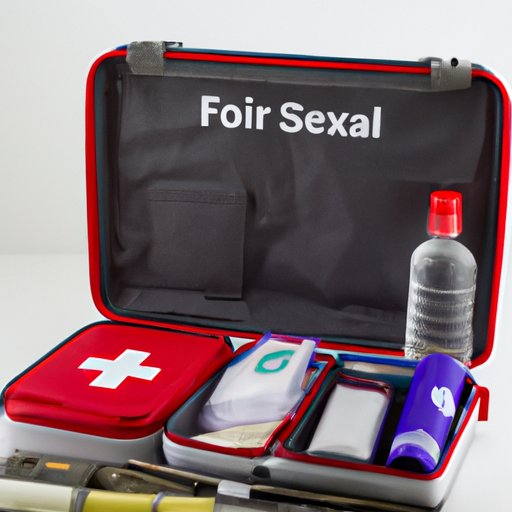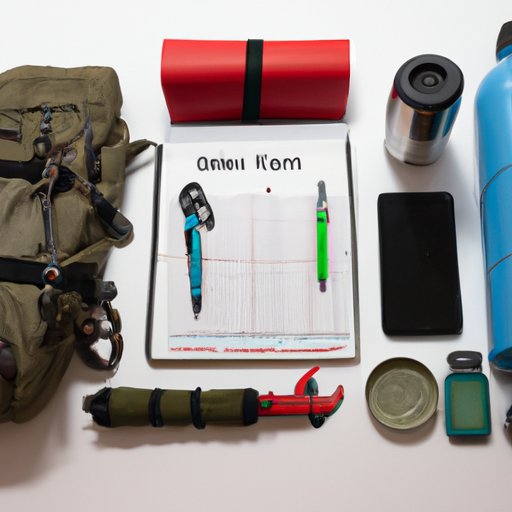Introduction
Hiking is a great way to get out of the house and explore the beauty of nature. Whether you’re looking for a leisurely day trip or an extended backpacking adventure, it’s important to plan ahead so that your outing is safe and enjoyable. Here are some tips for planning a successful hiking trip.
Research the Hike
The first step in planning a successful hike is to do your research. You want to make sure that the trail you choose is appropriate for your skill level and desired length of trip.
Identifying the Type of Hike
Are you looking for a short day hike or a longer backpacking trip? Do you want to take a leisurely stroll or a more strenuous climb? Identifying the type of hike you’re looking for will help you narrow down your options.
Analyzing Terrain
Once you’ve identified the type of hike you’d like to take, you can begin researching potential trails. Read through online reviews to get an idea of the terrain you’ll be encountering. Is the trail rocky, steep, or full of switchbacks? Knowing what to expect will help you determine if the trail is right for you.
Estimating Distance
It’s also important to estimate the distance of the hike. This will help you plan for the amount of time it will take you to complete the trail. If you’re planning a longer backpacking trip, you’ll want to make sure you have enough food and water for the duration of your journey.
Gather Necessary Supplies
Once you’ve identified a trail, it’s time to start gathering the necessary supplies. Make sure you have all the gear you need before you set off on your adventure.
Determining What Gear is Needed
Depending on the type of hike you’re taking, you may need special gear such as hiking boots, trekking poles, a sleeping bag, and a tent. Make a list of the items you’ll need for your trip and check them off as you gather them.
Making Sure Gear is in Working Order
Before setting off on your hike, make sure all your gear is in working order. Test your flashlight and compass, inspect your tent and sleeping bag, and check to make sure your trekking poles are secure. Having properly functioning gear is essential to a successful hike.

Put Together an Emergency Kit
No matter how much you prepare, unexpected things can happen when you’re out in the wilderness. It’s important to bring along an emergency kit that includes supplies for any situation.
Packing a First-Aid Kit
Your emergency kit should include a first-aid kit with basic supplies such as bandages, gauze, antiseptic wipes, and pain relievers. Make sure you know how to use the items in your kit and bring along any medications you might need.
Including a Flashlight and Whistle
A flashlight and whistle should also be included in your emergency kit. The flashlight will come in handy if you find yourself in a dark situation, while the whistle can be used to alert people to your location if you become lost or injured.
Bringing a Map and Compass
Finally, don’t forget to bring a map and compass with you. Even if you’re familiar with the area, a map and compass can help you stay on track and find your way if you become lost.
Let Others Know Your Plans
Before heading out on your hike, it’s important to let someone know your plans. This could be a friend, family member, or park ranger. Providing details about your route and estimated return time will help ensure that you’re found in case of an emergency.
Providing Route Details
Give your contact person the details of your route, including the trailhead, the direction you’ll be traveling, and any landmarks you’ll be passing. You should also provide an approximate start and end time for your hike.
Notifying Destination
If you’re planning a longer backpacking trip, you should also provide your contact person with the destination you’re aiming for. This will help them locate you if something goes wrong.
Estimating Return Time
Finally, let your contact person know when you expect to be back. Give them an estimated return time, as well as instructions for what to do if you don’t return by that time.
Check the Weather
It’s important to check the forecast before leaving on your hike. Unforeseen weather conditions can put a damper on your outing and even be dangerous. Make sure to pack accordingly and be prepared for whatever Mother Nature throws your way.
Checking Forecast Before Leaving
Check the weather forecast the day before your hike and again the morning of. Make sure to dress appropriately and pack extra layers in case the temperature changes unexpectedly.
Stay Hydrated
Staying hydrated is essential for a successful hike. Make sure to bring plenty of water and snacks to keep your energy up throughout the day.
Bringing Water and Snacks
Pack at least one liter of water per person for a day hike, and two liters per person for a longer backpacking trip. Also bring along some high-energy snacks for a quick boost. Dried fruits, nuts, and energy bars are all good options.
Have Fun
Above all else, make sure to enjoy yourself! Hiking is the perfect opportunity to appreciate the beauty of nature and get away from the hustle and bustle of everyday life. Soak in the scenery, listen to the sounds of the forest, and appreciate the wildlife around you.
Conclusion
Planning a successful hiking trip takes research, preparation, and safety precautions. By doing your research, gathering the necessary supplies, putting together an emergency kit, checking the weather, staying hydrated, and having fun, you can ensure that your outing is both safe and enjoyable.
(Note: Is this article not meeting your expectations? Do you have knowledge or insights to share? Unlock new opportunities and expand your reach by joining our authors team. Click Registration to join us and share your expertise with our readers.)
